

 |
NASA's 5 Most Significant and/or Risky Manned Spaceflights |  |
|
Of the 150+ US manned spaceflights, five flights stand out as the most significant and/or risky. It's debatable, of course, but it's my opinion that there are five US manned spaceflights that stand out as being the most significant, historical and/or risky. I have presented below autographed items by these five crews: Mercury-Redstone 3; Mercury-Atlas 6; Apollo 8; Apollo 11 and the Space Shuttle's first flight, STS-1. |
|
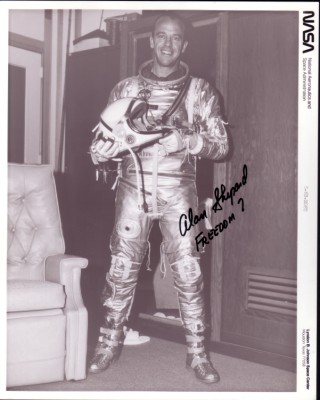 |
MERCURY-REDSTONE 3 On May 5, 1961 Alan Shepard became the first American in space during his 15 minute sub-orbital Mercury-Redstone 3 flight. His flight officially began America's entry into manned spaceflight and prompted President John F. Kennedy to boldly challenge NASA to put a man on the moon before the end of the decade. While Shepard's modest flight was probably the least risky of all of America's more than 150 manned spaceflights, it certainly was one of the most significant. |
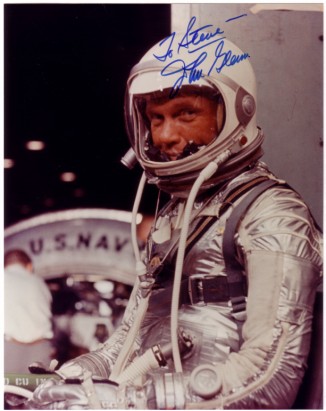 |
MERCURY-ATLAS 6
On February 20, 1962, John H. Glenn, Jr., rode a powerful and not totally reliable Atlas rocket into space to achieve America's first earth orbital spaceflight. This flight combined both significance and risk and the payoff was the American space program equaling what had been accomplished on April 12, 1961 by Russian Cosmonaut Yuri Gagarin, when he became the first human to orbit the Earth. The race to the moon was on. |
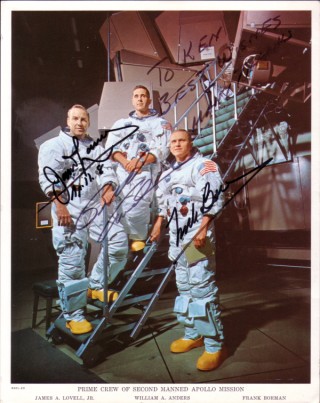 |
APOLLO 8 On Christmas Eve, December 24, 1968, the three Apollo 8 astronauts became the first humans to orbit the moon, and awed millions of viewers by sending back live television pictures of the lunar surface passing slowly beneath them. Many consider Apollo 8 the riskist & boldest manned spaceflight of all and certainly one of the most historical. Frank Borman, Jim Lovell and Bill Anders were the first astronauts to ride the mighty Saturn V moon rocket and were boosted almost a quarter of a million miles from Earth and without the added safety of a Lunar Module. Before Apollo 8, no human had ventured more than 850 miles above the Earth. |
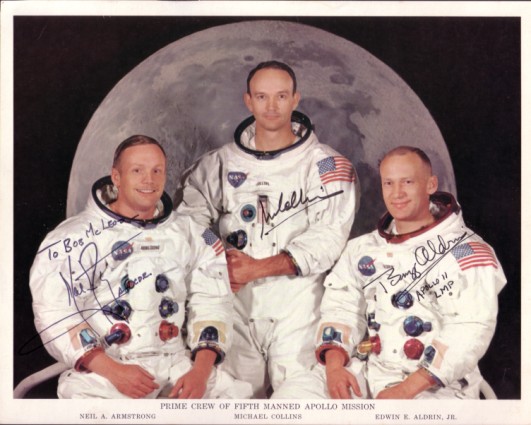 |
APOLLO 11 While Apollo 8 went far beyond where no man had gone before, Apollo 11 went even further: to the surface of the moon. Neil Armstrong's voice transmission on July 20, 1969 confirmed that Lunar Module Eagle and two humans were safely on the moon: "Houston, Tranquility Base here, the Eagle has landed." Certainly Apollo 11's epic voyage will forever stand as one of mankind's greatest, boldest and riskist achievements. |
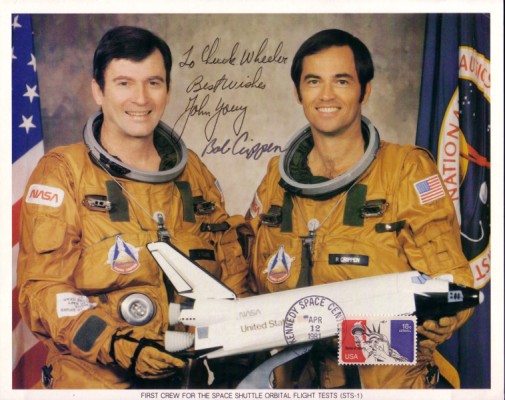 |
STS-1 STS-1, the Space Shuttle's first flight on April 12, 1981, may qualify it as the boldest, riskiest & most dangerous manned spaceflight ever. Never before had a launch vehicle been flown manned on its first flight and never before had such an unusual, complex spacecraft flown. Besides being partially powered by solid rocket fuel propulsion, which had never been used before on manned flights, the successful conclusion to the flight required that the spacecraft return to Earth like an aircraft and make an unpowered wheeled landing after entering the atmosphere at 25 times the speed of sound. Space Shuttles have flown more than 125 missions, but STS-1 stands out as its premier mission. |
 |
Mercury-Redstone 3 and Mercury-Atlas 6 Top: Alan Shepard signed MR-3 launch cover- TTM 1987. Bottom: John Glenn signed MA-6 launch cover - TTM 1983. |
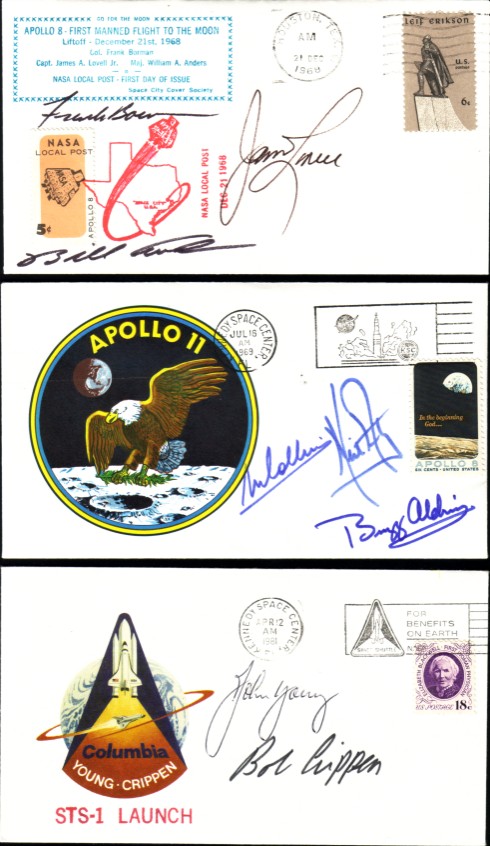 |
Apollo 8, Apollo 11 and STS-1 Top: Apollo 8 cover signed by Borman, Lovell and Anders - bought 2004. Middle: Apollo 11 launch cover signed by Armstrong, Aldrin and Collins - bought 1989. Bottom: STS-1 launch cover signed by John Young and Bob Crippen - TTM early 1980's. |